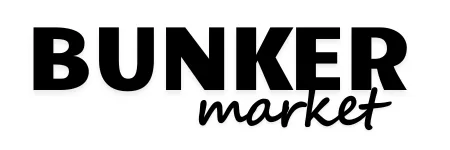In response to the growing demand for advanced fire safety solutions to support the maritime industry’s transition to cleaner fuels, global Survival Technology solutions provider Survitec has reconfigured and enhanced its Dry Chemical Powder (DCP) fire extinguishing system. This enhancement aims to better protect vessels running on LNG and LPG fuels. The upgrades have received type approval certification and are now being specified for newbuild and existing vessels.
Since receipt of DNV certification, Survitec has received orders for installation to a 16,000 TEU container ship with an estimated beam width of over 50m, which is under construction at a newbuild yard in South Korea.
Rafal Kolodziejski, Head of Product Support & Development – Fire Systems, Survitec, said: “This first order represents a crucial step forward in ensuring the safety of ships running on LNG or LPG ships. The Survitec DCP system offers comprehensive bunkering station protection, cost-efficiency, and versatility for a variety of vessel types, whether newbuild or retrofit.
“Dry chemical powder systems have long safeguarded LNG and LPG cargo vessels, but as the industry embraces liquefied gases as a propulsion fuel, the unique requirements for protecting bunkering stations on a wider range of vessels, such as large cruise ships, containerships, and tankers, is becoming increasingly important.”
The newly enhanced DCP system from Survitec comprises an extinguishant storage container, nitrogen gas cylinder and safety valves. It comes complete with a pressure regulator, piping, and discharge devices, including nozzles.
The development that sets Survitec’s DCP system apart from others on the market is that longer lengths of discharge piping can be combined with smaller volumes of powder to optimise fire protection for bunkering stations and fuel-switching operations on a broader range of vessels. This is achieved through more precise control over propellant and powder mixing and a new delivery nozzle design.
While the recent DNV certification allows pipe runs to be increased from 20m up to 69m, longer pipe runs can be used on a case-by-case basis. Whereas for shorter pipeline lengths, it is now possible to use a more straightforward powder driving solution that enables the use of smaller nitrogen cylinders.
Piotr Bulas, Product Manager for DCP solutions, Survitec, explains: “Overall delivery pipework length is ultimately governed by the number of elbows required. However, a key differentiator with our solution is that it has been designed to support potassium bicarbonate or sulphate salts as the dry power medium. This important choice of powder presents multiple advantages, from allowing smaller, lighter, and more easily accommodated hardware to the lower overall cost of consumables.
“Competitor solutions may discharge up to 250kg of powder to meet classification society and IGF Code requirements. Through technological advancement, we can now offer the same level of protection in a more efficient, lower cost package that is more easily accommodated on board.”
Designed for both newbuilds and existing ships undergoing dual fuel propulsion solution retrofits, Survitec’s enhanced, nitrogen-propelled DCP solution meets the mandatory requirement for a constant deployment at a minimum of 3.5kg/second for 45 seconds using just 175kg of powder under discharge pressure of 4-6 bar.
“In many cases, LNG bunkering stations are positioned on both sides of the ship. With the DCP system from Survitec, shipowners can often safeguard both stations with just one DCP unit without compromising performance. This reduces installation and maintenance costs,” said Kolodziejski. “In addition, unified components and modular scalability allow for modifications to be made simply and cost-effectively during the shipbuilding process.”
Survitec’s continuous innovation approach to maritime safety extends to maintenance, as the new DCP system can be serviced and tested without disassembling core components while the vessel remains in commission. Components are assembled on a skid for delivery as a single, compact unit ready for ‘plug and play’ installation, while an additional connection facilitates servicing procedures without the need to disable the operating cylinder.
All of Survitec’s DCP firefighting systems are fully compatible with the company’s recently launched digital fire safety management solution, SMARR-TI, ensuring comprehensive safety coverage across the vessel.
The company also offers a range of related services, from design consultancy and installation to training and through-life support, ensuring the safety and reliability of the DCP system for the full life of the vessel.
Source Survitec

